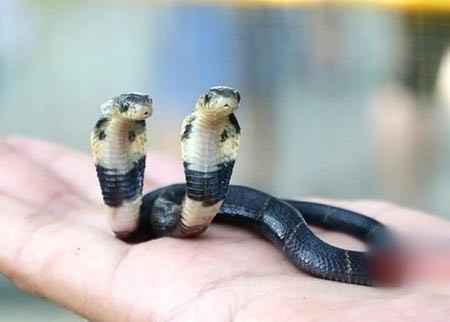A common saying goes, "two heads are better than one," but it might not be applicable to everything, especially in the case of a mutant, a two-headed cobra snake found in China.
Huang, who raises snakes for a living, discovered the mutant baby cobra while working on his farm in Yulin, southern China, 10 days ago.
The second head of the cobra starts at three quarters up the snake's entire body length and can move freely. Despite their condition, both cobra heads possess their own brains, which cause trouble when they try to move in opposite directions. There are even times when the twin-headed snakes would assault each other, and even attempt to swallow each other.
Nanning zoo had recently adopted the two-headed cobra. However, snake specialists might still be required to monitor the snake and sustain its life, the zoo said.
Li Keqi, a Nanning zookeeper, has provided extensive care for snakes since 2007, but said that this was his first time to see a case of polycephaly, the condition of possessing two heads.
Weighing only 50 grams, about 15 grams lighter compared to an average cobra, the 20-centimeter-long snake could not eat or drink as it has only one digestive system. The zoo is using artificial feeding to sustain the animal, but this method is not recommended for long-term practice.
While polycephalic snakes usually last for just a few months, one two-headed rat snake was reportedly lucky to have lived for 20 years.
The Nanning zoo is appealing to snake experts from all over the globe to offer their advice on the situation.



























